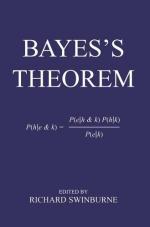|
This section contains 6,042 words (approx. 21 pages at 300 words per page) |

|
The posthumous publication, in 1763, of Thomas Bayes's "Essay Towards Solving a Problem in the Doctrine of Chances" inaugurated a revolution in the understanding of the confirmation of scientific hypotheses—two hundred years later. Such a long period of neglect, followed by such a sweeping revival, ensured that it was the inhabitants of the latter half of the twentieth century above all who determined what it was to take a "Bayesian approach" to scientific reasoning.
Like most confirmation theorists, Bayesians alternate between a descriptive and a prescriptive tone in their teachings: They aim both to describe how scientific evidence is assessed and to prescribe how it ought to be assessed. This double message will be made explicit at some points, but passed over quietly elsewhere.
Subjective Probability
The first of the...
|
This section contains 6,042 words (approx. 21 pages at 300 words per page) |

|


